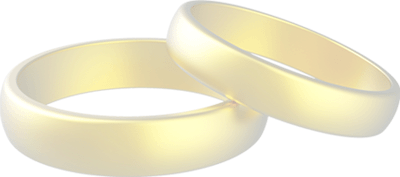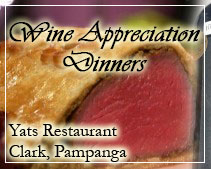Restaurant dining and eating out in Clark Pampanga: Tips for Lowering Your Dietary Fat Content
Stephen Barrett, M.D.
People whose blood cholesterol and LDL-cholesterol levels are undesirably high should consume a diet that is relatively low in total fat and saturated fat. To do this systematically, it is necessary to become fully aware of what you are eating. This means getting into the habit of checking labels to determine the amount of cholesterol and the amount and type of fat. You should also pay attention to the “hidden” fats found in processed foods such as cookies, crackers, and snack cakes, and the kinds of fats and oils used in their own cooking.
The next step is to make substitutions. For example, leaner cuts of beef (select or choice rather than prime) should be used, and consumption of fish, poultry, fresh fruits and vegetables, beans, and other legumes should be increased. Foods high in complex carbohydrates-such as whole grains, beans, and vegetables-can be made the “main dish,” with small amounts of red meats and cheeses becoming the “side dishes.” Mixed dishes such as stews, casseroles, and pasta and rice meals can combine small amounts of meat with other foods, such as grains or vegetables.
Finally, evaluate your progress by having your blood cholesterol tested within a few months and then periodically as recommended by the professional who is guiding them. The goal should be a gradual but steady reduction in your total cholesterol and LDL-cholesterol levels.
Practical Tips for Lowring Fat Content
• Trim all visible fat from beef and poultry, and remove the skin from poultry before eating.
• Bake, broil, or roast meat dishes instead of deep-fat frying them. To prevent drying and add flavor, baste with wine, lemon juice, or a low-fat broth.
• Try experimenting with herbs and spices, such as dill, tarragon, cilantro, and basil.
• Avoid fatty gravies and sauces.
• If pan- or stir-frying, use small amounts of vegetable oils such as canola or safflower oil; also increase your use of olive oil.
• Minimize use of butter.
• Minimize use of products, such as margarines, that contain partially hydrogenated oils (trans-fatty acids).
• To cut down on whole-milk products, switch to 2% or 1% milk, and perhaps eventually to skim milk. Many people find it easy to get accustomed to low-fat milk, and that when they do so, whole milk tastes too rich. Use the low-fat or skim-milk versions of ricotta, cottage, and mozzarella cheese. Low-fat farmer or pot cheeses also are available. All these cheeses should contain no more than 2¬6 grams of fat per ounce. For desserts, substitute ice milk, frozen yogurt (especially the nonfat variety), sherbet or sorbet for ice cream. If you do eat ice cream, choose regular rather than super premium types.
• Limit consumption of foods that contain palm, palm kernel, and coconut oils, lard, butter, unidentified shortening, egg-yolk solids, and whole-milk solids. Also, cut down on baked goods made from these ingredients or that are fried, such as doughnuts.
• Use nonfat or low-fat yogurt instead of sour cream in dips and toppings.
• Use only the egg whites or discard every other yolk in recipes requiring eggs (2 whites = 1 whole egg in recipes). Or try commercial cholesterol-free egg substitutes.
• Reduce the amount of fat in recipes by one-third to one-half, and use chiefly polyunsaturated and monounsaturated oils.
• Shrimp, lobster, and other shellfish may be eaten occasionally because they are lower in cholesterol than previously thought, and do not contain too much saturated fat.
• In coffee, use low-fat or skim milk instead of non-dairy creamers containing saturated fats. Skim milk powder also is acceptable.
• Substitute rice and pasta for egg noodles.
• Make your own popcorn for a low-calorie snack, but be sure to omit the melted butter. Beware of high-fat microwave popcorn products.
• Avoid nuts that are high in saturated fats, such as coconuts and macadamia nuts.
• Incorporate oat fiber into your diet, for example, in oat bran muffins or in casseroles. To increase total fiber intake, look for the words “whole wheat” or “whole grain” near the top of the ingredient list when buying breads and cereals.
• Use fresh fruit for dessert instead of high-fat desserts.
• Choose lowfat luncheon meats such as turkey breast or pressed turkey instead of salami and bologna. Also eat few frankfurters, other sausages, and bacon. When eating turkey, remember that white meat has less fat than dark meat.
• Buy or make salad dressings with predominantly unsaturated oils. Olive oil is an especially good choice. Or try a nonfat type or just vinegar or lemon juice.
• Limit use of organ meats that are very high in cholesterol, such as liver, kidneys, brain, and sweetbreads.
• Prepare soups and stews containing meat the day before eating them. After refrigerating, skim off the congealed fat on the surface prior to reheating.
• Be cautious about store-bought baked products such as pies, cakes, croissants, pastries and muffins. Try to find lowfat cookies and crackers. Or eat home-made baked goods prepared with small amounts of unsaturated oils. Angel cake is a good choice because it is low in fat and cholesterol.
• Use some of the many fat-free, cholesterol-free products marketed as substitutes for products that normally are high in fat.
• Make changes gradually to avoid feeling deprived. For most people, enjoying a rich dessert or a prime rib once in a while is not going to significantly affect their cholesterol level as long as the overall cholesterol-lowering diet is followed most of the time. It is better to splurge once in a while than to cheat a little bit each day.
Dietary Evaluation
Following above guidelines will reduce the fat, saturated fat, and cholesterol content of the diet and should come close to the fat and saturated-fat levels recommended by the National Cholesterol Education Program. However, the only way to determine how much fat and cholesterol are actually consumed is to calculate the amounts contained in one’s daily diet. The MyPyramidTracker Web site offers a practical way to do this. After setting up a password-protected account, the user can construct a favorite-food list and enter data each day to determine the overall fat percentage as well as how one’s diet compares to the Dietary Guidelines for Americans. To better understand their diet over time, registered users can track what they eat for up to 1 year. There is also a physical activity assessment that is accompanied by detailed advice.
Computer programs are also available for determining fat and cholesterol intake. Those containing large databases, including nutritional analyses of brand-name products and fast food items, generally provide the most accurate information. Computer programs are accessible to consumers at certain clinics and through nutrition professionals in private practice. Some are also marketed directly to the public for home use. The USDA Web site contains a food composition database. Despite these aids, some consumers wishing to design a diet that is significantly low in fat would be wise to consult a registered dietitian or other professional nutritionist.
Source: http://www.quackwatch.com/03HealthPromotion/lowfat.html
To many visitors from Manila, a good wedding venue in Pampanga must be located in a city that is safe, clean and not so noisy. One hotel in Clark Philippines really fits those criteria, and it is Clearwater Resort & Country Club. The location of this wedding venue is convenient for visitors looking to go out of town from Manila in a short getaway with family and friends traveling north to Angeles City Clark Pampanga. Traffic along the North Expressway NLEX is always light and the new Subic Tarlac Clark Expressway ScTex takes visitors straight into Clark Freeport without going through any towns and cities along the way.
Wedding guests enjoy spending time relaxing at Frolic Garden of this hotel in Clark Pampanga. There is a special feeling in this hotel in Clark Philippines makes you slow down and enjoy the ambience. Children like playing in the Family Cove of this Clark resort hotel. Hotel guests prefer Clark over Angeles City, Subic or hotel in Manila. This hotel in Clark Philippines has style and character. Many wedding guests even come back again to relax and enjoy the beautiful ambience of this hotel in Clark Pampanga.
For reservations, comments and inquiries,
www.philippinesweddingvenue.com
Philippines Wedding Venues Service Center
Creekside Road corner of Centennial Road,
Central Business District, Clark Freeport Zone,
Pampanga, Philippines 2023
Tel: (045)599-5949 0917-520-4403 0922-870-5177
For any assistance in planning and organizing a wedding ceremony, indoor or outdoor garden reception or to find other wedding service providers, Click here to contact us click here
Manila Sales Office
3003C East Tower, Phil Stock Exchange Center,
Exchange Rd Ortigas Metro Manila, Philippines 1605
(632) 637-5019 0917-520-4393 Rea or Chay
Email: Wedding@Yats-International.com
For assistance in hotel and resort bookings in Clark, Pampanga, Philippines, log on to
http://www.HotelClarkPhilippines.com
To inquire with the highly recommended beach resort hotel in Clark Pampanga visit http://www.ClearwaterPhililippines.com
For more information about Clark, Pampanga, Philippines log on to
http://www.ClarkPhilippines.com









